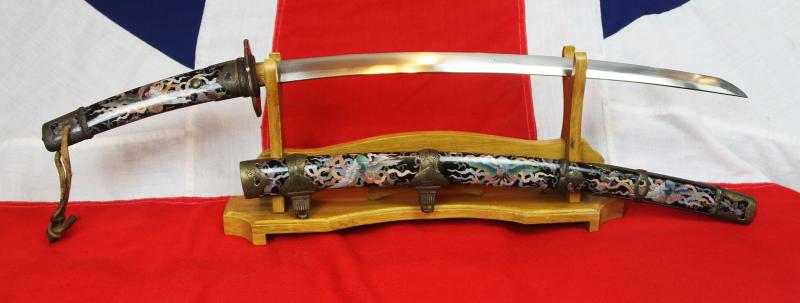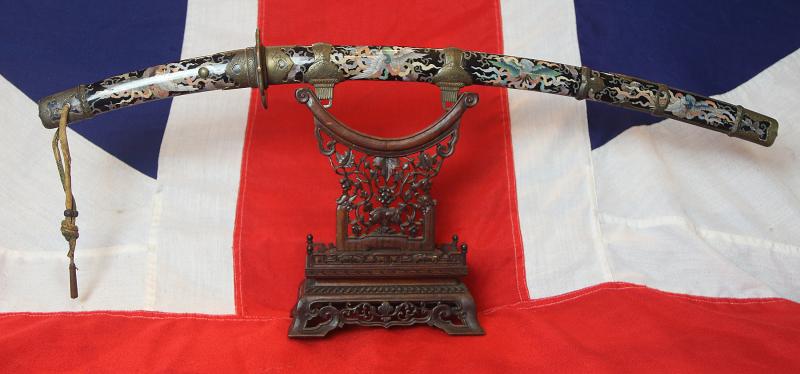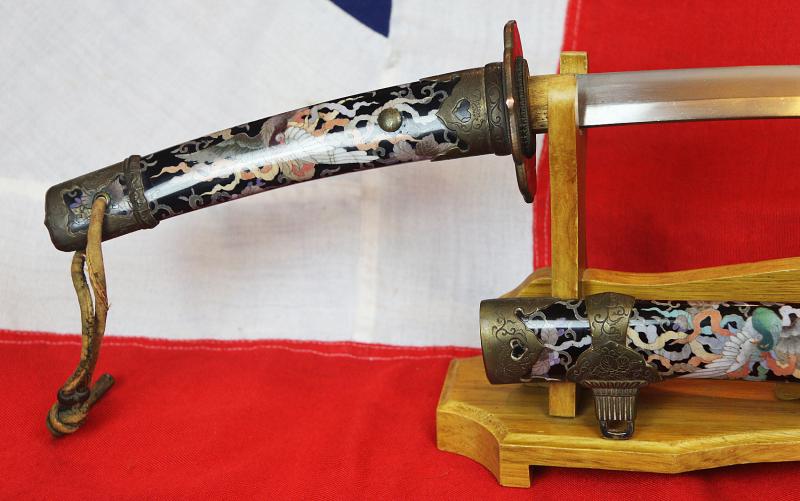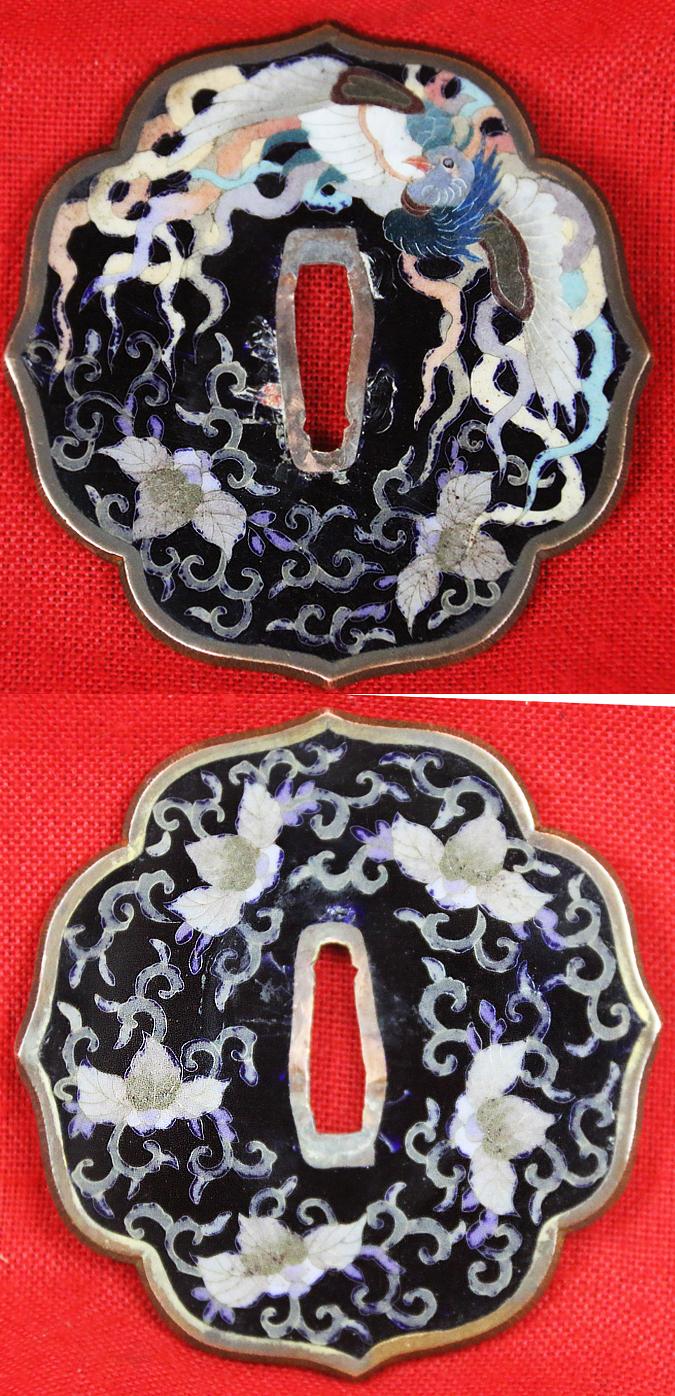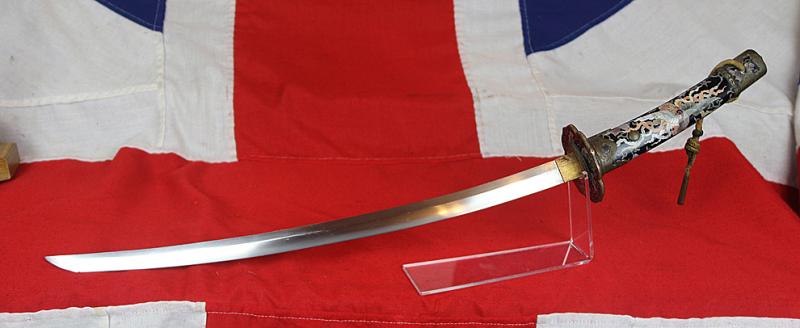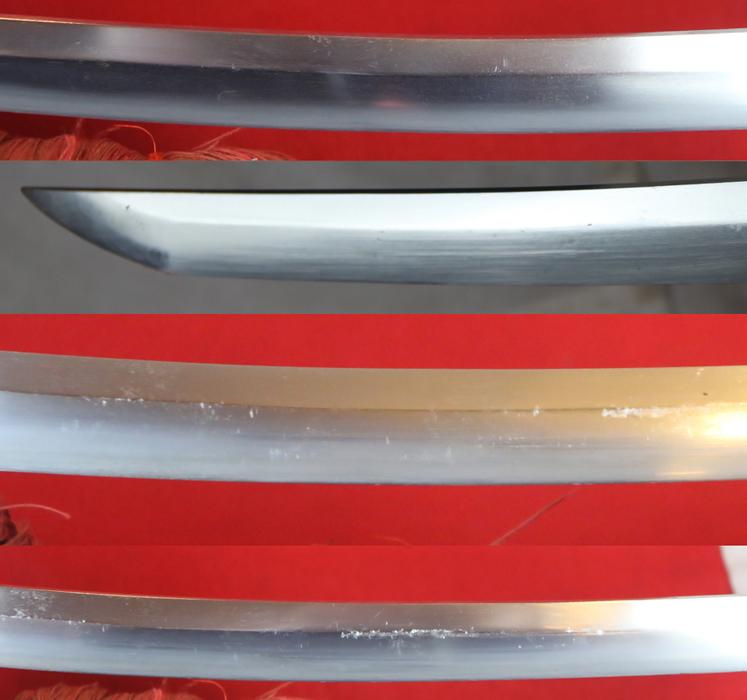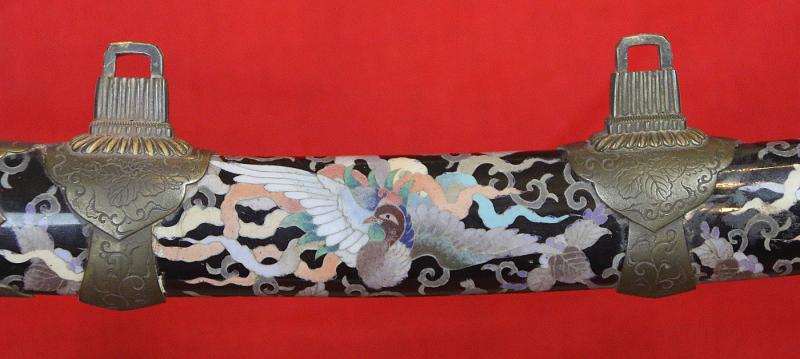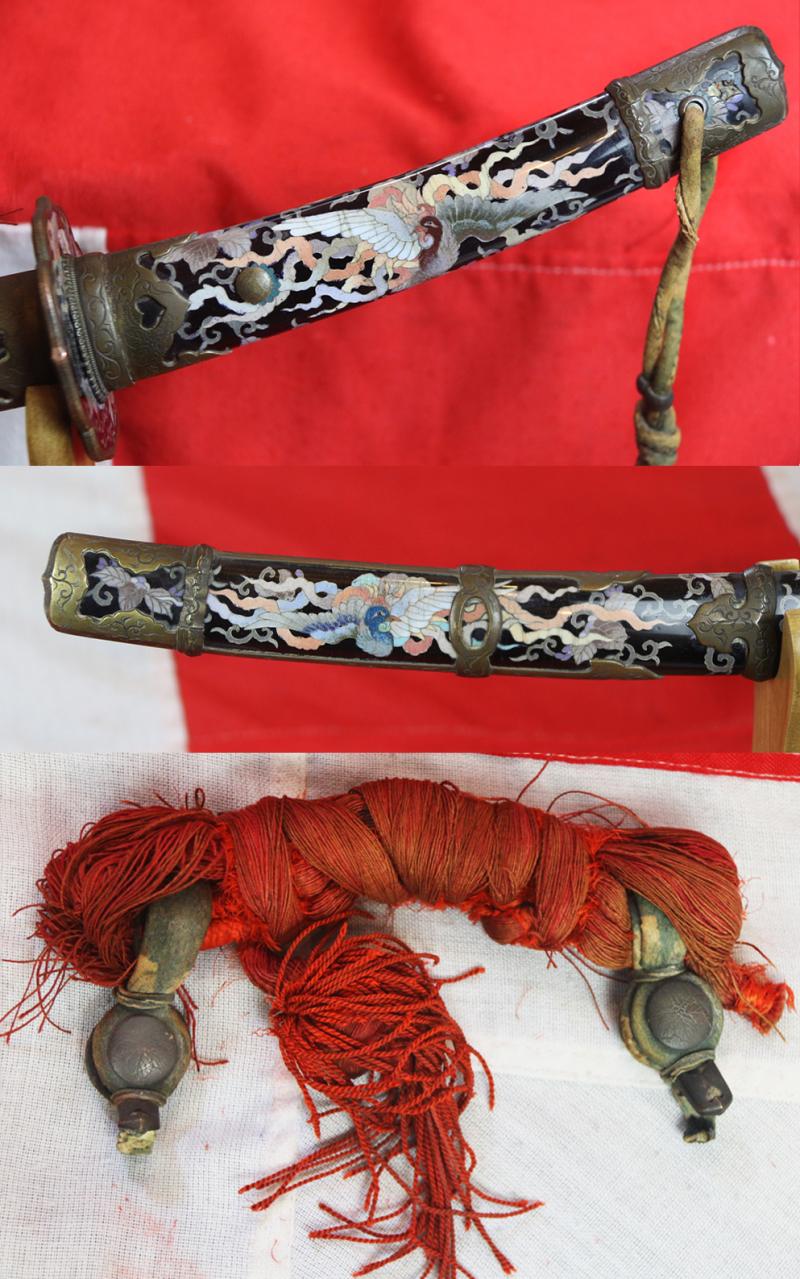A Stunning True Art Sword. A Spectacular & Immensely. Beautiful Museum Grade Cloisonne Enamel Samurai's Suzaku Phoenix Tachi With A Signed Shinto Blade By Bizen Kuniyoshi. Bearing the Paulownia Mon of the Imperial Court
A true and iconic example of a stunning samurai art sword. A magnificent collision of beauty and utility. It does not fail to attract admiration and awe from all that see it, even those that have little or no interest at all in original fine antique weaponry, would agree that this is simply a remarkable example of the finest and intricate craftsmanship to be seen in the world. Enamel work comparable to such as a piece of sublime object d’art by the genius Romanov Family Imperial Court jeweller Carl Faberge himself. This is only the second such very rare cloissonne enamel 'Suzaku Phoenix' tachi we have seen and had the privilege to offer in around five years. Interestingly that one was used by a Daimyo of the court of the Shogun Tokugawa, and bore his aoi mon.
Such wondrous pieces, in near perfect condition, are incredibly rare, however, being one of the world's leading Japanese art sword dealers, we do manage to find such glorious swords on occasion. For us though, the exceptional is incredibly important, so we actively seek not the 'run of the mill', which certainly takes considerably more time and effort, but we firmly believe {and so do thousands of our regulars}, it to be well worth it.
Suzaku is one of the four, Japanese, 'Great Celestial Beasts'. Suzaku translates to "Vermillion Chinese Phoenix". Cloisonne enamel mounted ancient bladed swords were often fabulous cultural presentation pieces, offered to great samurai and nobles as a symbol of their status and importance within the Japanese samurai nobility class hierarchy. This sword bears the imperial court paulownia crest upon the tachi's saya hangers, that was granted to individuals and families by the imperial court as a mark of honour and distinction. It symbolizes high status, nobility, and honour. The fabulous Japanese cloisonne koshirae fittings and mounts may well have been designed by Namikawa Yasuyuki, who was 'Teishitsu Gigei’, an Imperial Craftsman to the court of the Emperor Meiji. He decorated his later pieces with areas of semi-transparent mirror black enamel ground, such as this fabulous piece displays, that became a hallmark of most of Yasuyuki’s finest later work. Overall decorated with the incredible and fantastically detailed, magnificent, mythological phoenix.
Although Chinese cloisonné enamels had long been highly valued it was not until the late sixteenth century that cloisonné enamels became more widely used in Japan.There had long been a demand among the samurai for fine decoration of sword fittings and cloisonné enamels were used on tsuba (sword guards). The finest of these were made by the Hirata School, founded by Hirata Dōnin (died 1646) which was active well into the nineteenth century. A former samurai and one of the greatest artisans of the art was the cloisonné artist Namikawa Yasuyuki. Yasuyuki began his career around 1868 and worked with the Kyoto Cloisonné Company from 1871 to 1874.
He established his own studio and exhibited his work at national and international expositions. The most significant result of the collaboration of Wagener and Yasuyuki was the creation of the semi-transparent mirror black enamel that became the hallmark of most of Yasuyuki’s subsequent work.
Yasuyuki’s cloisonné enamels are characterised by the skilful use of intricate wirework and superb attention to detail and the designs on his earlier pieces are relatively traditional, consisting mainly of stylised botanical and formal geometric motifs. Much of his later work tends to be more pictorial with scenes from nature and views of landmarks in and around Kyoto.
Yasuyuki continued to improve his technical and artistic skills and in 1896 he was appointed Teishitsu Gigei’ in (Imperial Craftsman) to the court of the Emperor Meiji.The four celestial beasts, Seiryu the dragon , Suzaku pheonix, Byakko white tiger, and Genbu tortoise were probably introduced to Japan from China sometime in the 7th century AD, for their images are found on the tomb walls at Takamatsuzuka in Nara, which was built sometime in the Asuka period (600 - 710 AD). They are also found on the base of the Yakushi Triad at Yakushi-ji Temple , also in Nara. In Japan, the term “Suzaku” is translated as “Red Bird” or “Vermillion Chinese Phoenix.” In both Japan and China, the symbolism of the red bird seems nearly identical to or merged with that of the mythological Phoenix. One must consider the Suzaku and the Phoenix to be the same magical creature, although one cannot be certain if this is entirely true. Scholar Derek Walters says the Phoenix was supplanted or replaced by the Red Bird, for the Red Bird more accurately reflected the astronomical iconography associated with the southern lunar mansions.
It corresponds to summer, red, fire, and knowledge; it makes small seeds grow into giant trees. Often paired with the dragon, for the two represent both conflict and wedded bliss; dragon (emperor) and phoenix (empress). Portrayed with radiant feathers, and an enchanting song; and it only appears in times of good fortune. Within the ancient Imperial Palace in Japan, there was a gate known as Suzakumon (Red Bird Gate) Pairs of vases from these Meiji period Japanese cloisonne enamel workshops can now command prices into six figures. All of the fittings are in superb condition, damage free, the blade is in beautiful polish for its age age.Overall 27.5 inches long, blade 18.75 inches long
It is important to bear in mind, that due to the revered status that Japanese swords achieve for most of their working lives in Japan, that the condition they survive in can be simply remarkable. The size of this tachi is around the size, overall, of a chisa katana, or o wakazashi.
Every single item from The Lanes Armoury is accompanied by our unique Certificate of Authenticity. Part of our continued dedication to maintain the standards forged by us over the past 100 years of our family’s trading, as Britain’s oldest established, and favourite, armoury and gallery
Code: 23683
15995.00 GBP


